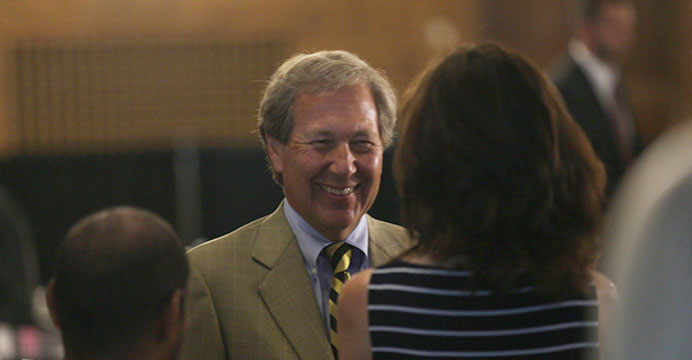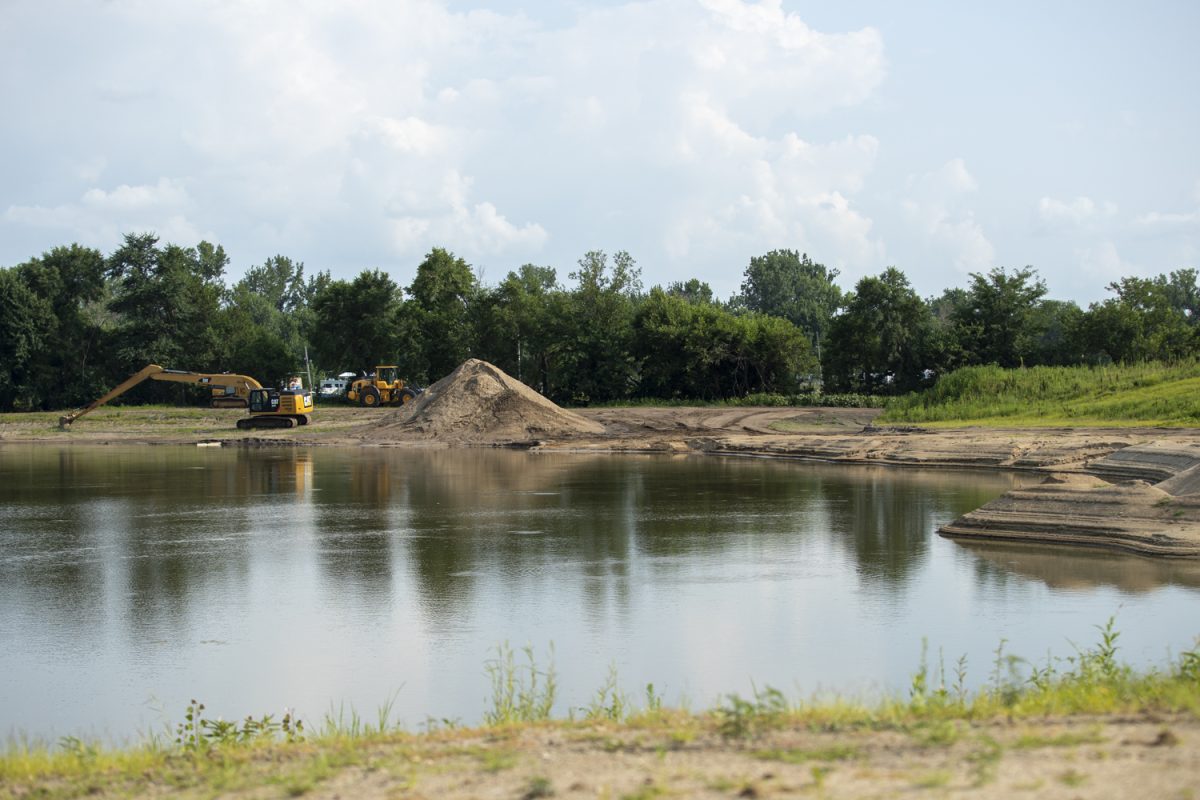Updated on April 18 at 1pm to include UI Athletic Director Gary Barta’s comments.
President Bruce Harreld is considering helping the academic budget with athletics revenue.
By Cindy Garcia | [email protected]
Could the University of Iowa’s fiscal issues be fixed by its own athletics programs?
That’s the question UI President Bruce Harreld has begun to ponder.
In an interview with The Daily Iowan on April 15, Harreld said he has put forth the idea that Hawkeye sports programs could contribute to the academic budget.
Harreld said he has consulted with others, including UI Athletics Director Gary Barta, various Hawkeyes coaches, and other university presidents, to consider the change.
“I’d like to see it happen relatively soon. I’d like to stand up and be one of the first major institutions in the United States that says, ‘Hey, it’s moving the other way,’ ” he said, referring to developments initiated in 2007 that cut off state tax dollars to Hawkeyes athletics programs.
The idea is not new. In 2011, former state Board of Regents President Michael Gartner advocated in a guest opinion in the Des Moines Register for the sharing of funds between the Athletics Department and the UI.
And in February, Sen. David Johnson, R-Ocheyedan, proposed a bill that would give UNI’s athletics program funds from those of the UI and Iowa State.
The Daily Iowan previously reported that in June 2007, the UI Presidential Committee on Athletics decided the sports department would be completely self-supporting. According to that panel, during the previous year, the department had spent $70,000 to $80,000 in general funds from outside the department.
According to a 2014-15 USA Today analysis, other athletics programs in the Big Ten that are provided no subsidy and are also profitable were those of Ohio State, Michigan, Penn State, Nebraska, and Purdue.
“It’s funny; if you look at other student newspapers across the country, the question being asked are the opposite — ‘How much money are you taking out of student tuition to pay for academics?’ ” said Provost P. Barry Butler during the same interview.
According to documents released via the state Board of Regents, the UI’s fiscal 2015 athletics budget was $89.7 million. The overall revenue and expense budgets were 6.4 percent, or $5.4 million greater than the fiscal 2014 budget.
The ISU Athletics Department’s proposed fiscal 2015 budget totaled $62 million. The University of Northern Iowa’s athletics program fiscal 2015 budget reported revenue projections of $13.1 million.
Harreld said maintaining the quality of UI sports programs would also need to be considered, but the challenge could be met with the same creativity that made the UI athletics program self-sustaining.
“But yes, I have asked it,” Harreld said. “We’re expecting people to step up and meet the challenge. If they can’t, we can talk about it. Why wouldn’t we ask it?”
Barta said he has been involved with several strategic discussion with campus leaders about shaping the future.
“Budgets and finance are an important part of those talks. Athletics goal to WIN-GRADUATE-DO IT RIGHT remains the central focus… If, in addition, athletics can help in achieving greater university goals… Even better,” he said in a statement.







